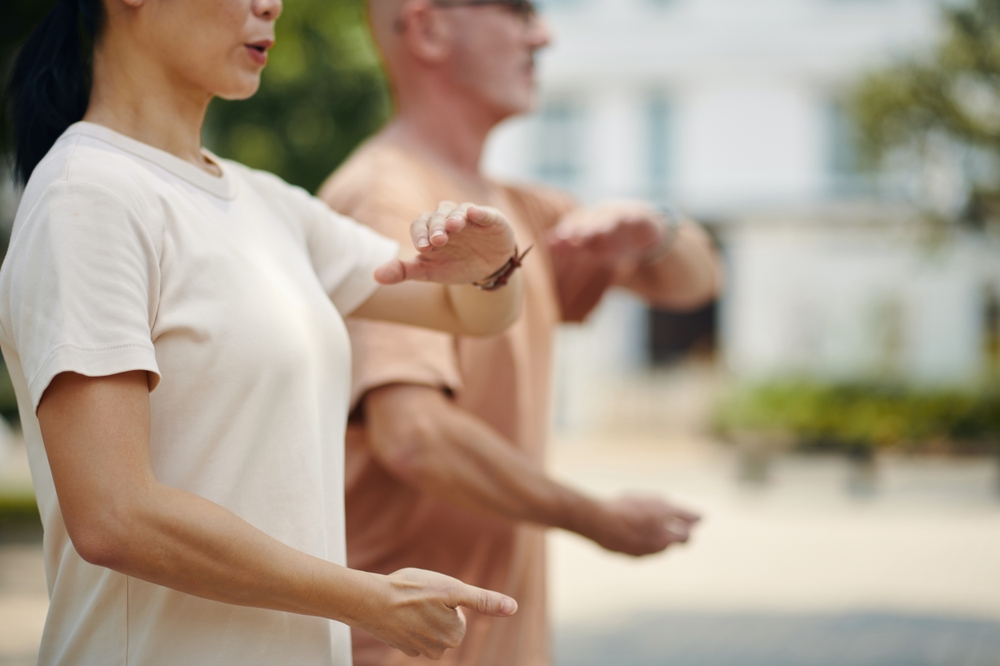Mindful Movement: The Art of Integrating Meditation and Exercise
How often do you find yourself rushing through a workout, mind racing with to-do lists and worries? What if there was a way to combine the physical benefits of exercise with the mental clarity of meditation? Enter mindful movement, a revolutionary approach to wellness that's changing the game for fitness enthusiasts and meditation practitioners alike.

The Origins of Mindful Movement
The concept of mindful movement isn’t entirely new. Its origins can be traced back to ancient Eastern practices such as yoga and tai chi, which have long emphasized the connection between physical postures and mental states. However, the modern interpretation of mindful movement has evolved to encompass a broader range of activities and applications.
In the 1970s, Jon Kabat-Zinn pioneered the use of mindfulness in clinical settings with his Mindfulness-Based Stress Reduction (MBSR) program. This laid the groundwork for integrating mindfulness into various aspects of daily life, including physical activity. As research in neuroscience and psychology advanced, the benefits of combining mindfulness with movement became increasingly apparent.
The Science Behind the Practice
Recent studies have shed light on the neurological and physiological benefits of mindful movement. When we engage in physical activity with focused attention, we activate multiple areas of the brain simultaneously. This includes regions responsible for motor control, sensory processing, and executive function.
Research published in the Journal of Health Psychology found that mindful movement practices can lead to increased body awareness, improved emotional regulation, and enhanced cognitive function. Furthermore, a study in the Frontiers in Human Neuroscience journal revealed that mindful exercise could potentially increase gray matter density in brain regions associated with learning, memory, and emotional regulation.
Techniques and Practices
Mindful movement can be incorporated into various forms of exercise and daily activities. Some popular techniques include:
-
Mindful walking: Focusing on each step, the sensation of feet touching the ground, and the rhythm of breath while walking.
-
Yoga with intention: Practicing yoga poses with heightened awareness of bodily sensations, breath, and present-moment experience.
-
Mindful strength training: Paying close attention to muscle engagement, form, and breath during weightlifting or bodyweight exercises.
-
Mindful running: Tuning into the body’s movements, breath, and surrounding environment while running.
-
Dance meditation: Moving freely to music while maintaining awareness of bodily sensations and emotional responses.
Benefits Beyond the Gym
The advantages of mindful movement extend far beyond physical fitness. Practitioners report improvements in various aspects of their lives:
-
Stress reduction: By focusing on the present moment during exercise, individuals can break the cycle of rumination and worry.
-
Improved body image: Mindful movement fosters a deeper connection with and appreciation for one’s body.
-
Enhanced creativity: The mind-body connection cultivated through mindful movement can lead to increased creative thinking and problem-solving abilities.
-
Better sleep quality: Regular practice has been linked to improved sleep patterns and reduced insomnia symptoms.
-
Increased emotional resilience: Mindful movement can help individuals develop greater emotional awareness and regulation skills.
Integrating Mindful Movement into Daily Life
Incorporating mindful movement into your routine doesn’t require a complete lifestyle overhaul. Start small by bringing awareness to simple daily activities:
-
Practice mindful stretching for a few minutes each morning.
-
Take short, mindful walking breaks during the workday.
-
Perform household chores with full attention to physical sensations and movements.
-
Engage in mindful cool-down exercises after workouts.
-
Experiment with different forms of mindful movement to find what resonates with you.
Mindful Movement Mastery: Quick Tips and Fascinating Facts
-
Did you know? Research suggests that mindful movement can increase the production of BDNF (Brain-Derived Neurotrophic Factor), a protein crucial for brain health and neuroplasticity.
-
Mindful movement tip: Start with the 3-Minute Body Scan. Before exercising, take three minutes to mentally scan your body from head to toe, noting any sensations or areas of tension.
-
Fascinating fact: Studies have shown that mindful movement practices can lead to improvements in balance and coordination, particularly in older adults.
-
Quick tip: Use the STOP technique during workouts - Stop, Take a breath, Observe your body and surroundings, Proceed with intention.
-
Did you know? Mindful movement has been successfully implemented in some schools, leading to improved focus and behavior among students.
As we navigate an increasingly fast-paced world, the practice of mindful movement offers a powerful antidote to stress and disconnection. By integrating awareness into our physical activities, we unlock a new dimension of well-being that nurtures both body and mind. Whether you’re a seasoned athlete or just starting your fitness journey, mindful movement provides a path to greater health, happiness, and harmony in daily life. Embrace this practice, and discover the transformative power of moving with intention and awareness.





